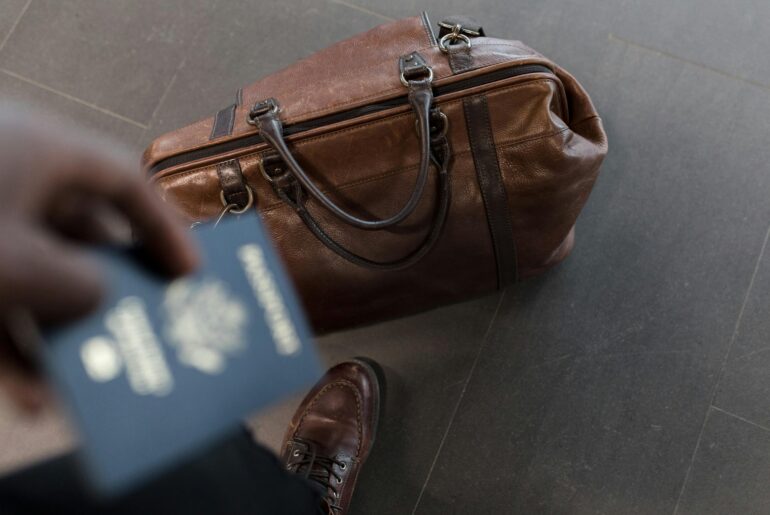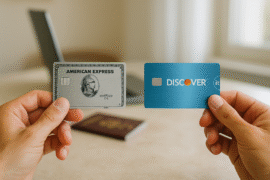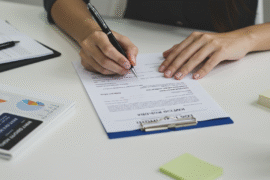This article may contain references to products or services from one or more of our advertisers or partners. We may receive compensation when you click on links to those products or services. Nonetheless, our opinions are our own.
JetBlue’s Luggage Weight Limits: Travel Smart and Stress-Free
When you plan your next trip with JetBlue to Latin America, make sure your luggage meets the airline’s weight limits. Checking the baggage rules can feel tricky. But if you know these guidelines, you can avoid surprise fees and stress at the airport. Whether you’re going for a short weekend or a longer vacation, knowing the weight restrictions helps you pack smart and travel smoothly. In this guide, we will look at JetBlue’s luggage weight limits. We will also share tips for a hassle-free journey from check-in to takeoff. Let’s dive in!
JetBlue’s Luggage Weight Policies: What You Need to Know
Getting ready for a JetBlue flight to Peru? Knowing the airline’s luggage weight limits can help you avoid stress and extra fees. Here are the key rules to remember:
- Checked Bags: You can check one bag that weighs up to 50 pounds for a fee. If your bag is heavier, you will pay extra. The charges range from $100 to $150, based on how much it weighs over the limit.
- Carry-On Bags: You can bring one carry-on bag. Its size can be up to 22” x 14” x 9”. You can also have one personal item, which should not be larger than 17” x 13” x 8”. Your personal item should fit under the seat.
- Sports Equipment: There may be special rules and weight limits for sports gear. To find the specific details, check JetBlue’s website.
Using a portable luggage scale at home can help you check if your bags are within the weight requirements before you reach the airport. This can make your trip begin without stress.
Packing Smarter: Make the Most of Your Baggage Allowance
Efficient packing is important to avoid overweight fees. It also helps you use your baggage space well. Here are some tips to pack smartly:
- Use Packing Cubes: These help you organize your things and make better use of luggage space.
- Roll Your Clothes: Rolling your clothes helps to cut down wrinkles and makes more room.
- Wear Heavy Items: Save space and weight by putting on big shoes or jackets when you fly.
Remember, carry-on bags and checked bags have a weight limit of 50 pounds. If you stay within this limit, you can avoid extra fees. This will also make your time at the airport easier.
Save on Overweight Fees: Weigh Your Luggage at Home
- Before you head to the airport, check the weight of your bags.
- Doing this can help you avoid any unexpected issues.
- It’s a good idea to weigh your bags to be ready.
- This way, there are no last-minute surprises when you fly.
- Bathroom Scale: First, weigh yourself. Then, weigh yourself while holding your luggage. Subtract your weight to get the weight of the bag.
- Portable Luggage Scale: These small devices are made for exact measurements and are simple to use.
- Adjust Your Packing: If your luggage is too heavy, take out unneeded items or share the weight between your bags.
Weighing your luggage at home can help you avoid extra fees for being overweight. This way, you can have a smoother travel experience.
Common Packing Mistakes and How to Avoid Them
Travelers often make mistakes about JetBlue’s luggage rules. Here are some things to keep an eye on:
- Ignoring Size and Weight Limits: Always check that your luggage meets JetBlue’s rules. Checked bags can’t be larger than 62 linear inches (length + width + height) or heavier than 50 pounds.
- Assuming All Airlines Are the Same: Every airline has its own baggage rules. Thinking they are the same can lead to extra fees.
- Overpacking Your Bags: Try not to fill your bags too much. Focus on packing only what you need and use clever packing methods.
Fees for Baggage: Understanding JetBlue’s Charges
JetBlue has different baggage fees based on the fare class and how many bags you check. If you are flying with Blue Basic, Blue, or Blue Extra, the first checked bag costs $35. The second bag costs $45. If you have more than two bags, the fees can go up a lot, with the third and any other bags costing $150 each. To save money, it’s a good idea to pay for your checked bags online or through the JetBlue app. You can save $5 on each of the first two bags if you pay more than 24 hours before your flight. Here’s a quick look at JetBlue’s baggage fees:
|
Fare Type |
1st Bag Fee |
2nd Bag Fee |
3rd Bag Fee |
|
Blue Basic |
$35 |
$45 |
$150 |
|
Blue |
$35 |
$45 |
$150 |
|
Blue Extra |
$35 |
$45 |
$150 |
|
Blue Plus |
Included |
$50 |
$150 |
|
Mint |
Included |
Included |
$150 |
Knowing about these fees can help you plan your budget for the trip. It can also help you avoid surprises at the airport right before you leave.
Key Takeaways for JetBlue Travelers
Understanding JetBlue’s luggage rules can help you skip extra fees and travel stress-free. Here’s a quick summary:
- Checked Bags: You can bring bags that weigh up to 50 pounds. If your bag is more than that, you will have to pay extra fees.
- Carry-On Bags: You can take one carry-on bag (22” x 14” x 9”) and one personal item (17” x 13” x 8”) with you.
By following these rules and getting ready ahead of time, you will have a travel experience without stress.
Exploring JetBlue’s Carry-On Allowance
When you fly with JetBlue, you can bring one free carry-on bag and one personal item. This makes your travel easier. A carry-on bag should be no bigger than 22″ x 14″ x 9″ (about 56 x 36 x 23 cm). This size will let it fit in the overhead bin. Your personal item can be a purse, laptop bag, or backpack. It must not be larger than 17″ x 13″ x 8″ and should go under the seat in front of you.
JetBlue doesn’t have a weight limit for carry-on bags. However, you must be able to lift your bag into the overhead bin by yourself. Think carefully about what you pack. Remember that both your bags together should not be too heavy. If you bring an additional bag, you might have to pay fees if it goes over JetBlue’s policy for carry-ons.
Finally, think about the type of plane you are flying on because the overhead bin space can be different. For A320 and E190 planes, the size for your personal item may change a bit. It’s a good idea to check the details so you won’t face any surprises. By knowing JetBlue’s carry-on allowance, you can pack lighter and travel easier. This will make your trip much more enjoyable.
Frequently Asked Questions
What is the weight limit for checked bags?
Checked bags can weigh no more than 50 pounds. If your bag is heavier, you will pay extra fees.
Are there weight restrictions for carry-ons?
There is no set weight limit for carry-ons, but they need to fit size requirements (22” x 14” x 9”).
What should I do if my luggage is overweight?
You can split items between bags or pay a fee for being overweight, which can reach up to $150 for each bag.
Are there exceptions for sports equipment or musical instruments?
Yes, different rules apply to these items. Check JetBlue’s guidelines for more information.
How can I ensure my luggage meets JetBlue’s requirements?
Use a luggage scale to weigh your bags and measure them to make sure they fit the size limits.

Reviewed and edited by Albert Fang.
See a typo or want to suggest an edit/revision to the content? Use the contact us form to provide feedback.
At FangWallet, we value editorial integrity and open collaboration in curating quality content for readers to enjoy. Much appreciated for the assist.
Did you like our article and find it insightful? We encourage sharing the article link with family and friends to benefit as well - better yet, sharing on social media. Thank you for the support! 🍉
Article Title: What Are JetBlue’s Luggage Weight Limits? Rules and Tips
https://fangwallet.com/2025/02/12/what-are-jetblues-luggage-weight-limits-rules-and-tips/The FangWallet Promise
FangWallet is an editorially independent resource - founded on breaking down challenging financial concepts for anyone to understand since 2014. While we adhere to editorial integrity, note that this post may contain references to products from our partners.
The FangWallet promise is always to have your best interest in mind and be transparent and honest about the financial picture.
Become an Insider

Subscribe to get a free daily budget planner printable to help get your money on track!
Make passive money the right way. No spam.
Editorial Disclaimer: The editorial content on this page is not provided by any of the companies mentioned. The opinions expressed here are the author's alone.
The content of this website is for informational purposes only and does not represent investment advice, or an offer or solicitation to buy or sell any security, investment, or product. Investors are encouraged to do their own due diligence, and, if necessary, consult professional advising before making any investment decisions. Investing involves a high degree of risk, and financial losses may occur including the potential loss of principal.
Source Citation References:
+ Inspo












































